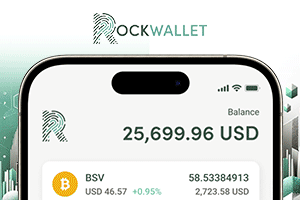|
Getting your Trinity Audio player ready...
|
Stablecoins play a key role in the blockchain industry’s overall infrastructure. Onboarding more of them to a platform is essential for developers who want to get more non-BSV people into the app. DXS CEO Armen Azatyan spoke to CoinGeek recently about reaching new traders beyond the BSV ecosystem and who DXS would like to onboard next.
DXS has been one of the BSV ecosystem’s quiet achievers. Launched in 2020, it’s been writing thousands of transactions to the blockchain per day ever since. It’s a trading platform similar to Robinhood in that it provides simple and user-friendly access to multiple markets for everyone, complete with leverage options, liquidity pools, and minimum trades as low as one cent. Unlike Robinhood, its operations are transparent, and users retain custody of idle funds. BSV’s scalable blockchain provides cheap, instant, and transparent settlements, and assets are tokenized using BSV’s STAS protocol.
The platform connects to users’ external wallets, thus avoiding the security risk of hosting funded wallets/accounts. DXS is also the first BSV app to integrate non-BSV wallets through an on-chain wrapping mechanism, seamlessly onboarding users from other blockchains to use BSV without even them noticing it (in essence, using BSV as plumbing for peer-to-peer transactions). In addition to BSV wallets HandCash and DotWallet, it also links to MetaMask, Trust Wallet, Fiorin, and Wallet Connect.
Coming soon are TON’s Telegram Wallet and Tonkeeper Wallet, which means DXS will also likely get listed on Telegram’s mini-app store. After that, the developers are working on onboarding Solana wallets and integrating the 1Sat Ordinals protocol.
“We want to have hassle-free deposits and withdrawals,” Azatyan said. DXS’s EVM integration (MetaMask and Trust Wallet) works just fine, but as an Ethereum wallet, Layer 2 or not, it comes with all that network’s shortcomings, like being slow or expensive to use.
Stablecoins is still the killer app on blockchain
Azatyan said having a stablecoin for DXS users was always a deal breaker right from the beginning, and having a BSV-native USD stablecoin was a dream. Fortunately, now that there is a stablecoin (MNEE) running on the BSV blockchain, “it will be miles simpler to implement that,” which DXS is now doing.
“It’s the only way to attract a wider audience of traders who don’t want constant exposure to BSV price volatility,” he added. While BSV is the best network to handle the exchange’s functionality, it’s better that it remains in the background as “plumbing” rather than being a speculative asset itself.DXS is a prime example of how a business can use the BSV network as infrastructure and succeed, independent of the BSV coin’s own market price and with users who may never have owned any Bitcoin.
Until recently, about 90% of DXS’s trading volumes came from users connected with BSV wallets. However, that number is dropping as BSV’s market price has fallen or remained stagnant over recent years, and diversifying beyond its BSV-centric user base has always been part of DXS’s plans.
“You need that to grow as an independent business,” Azatyan said. If a business targets only BSV holders, then its fortunes are permanently tied to those of the BSV market price. The same applies to businesses targeting only holders of a specific digital asset.
DXS’s development team has spent a few years onboarding stablecoins from other blockchains and has had to build a lot of its own infrastructure to accept USDT and USDC. In addition to MNEE, DXS is looking at Centi’s CCHF (Swiss Franc) stablecoin, although that particular token is more merchant-focused, so it may not be a high-priority market to chase.
For now, users can fund their positions on the exchange with BSV, USDC, USDT, DAI, wBTC, or ETH. And speaking of BSV being more open to those outside its sphere, Azatyan said he’d even love to see Tether running natively on BSV someday.
Tether’s image and governance issues over the years have made that kind of wish almost heretical in the BSV world, with its public commitment to compliance and transparency. But it currently runs natively on about two dozen different blockchains, and Azatyan said it’s become like “a stamp of approval for any blockchain” to have its own USDT token. It retains its first-mover advantage, and every year it adds to its lifespan, adds more liquidity, and cements its position in the market.
That’s something beyond DXS’s control, but being able to handle whatever asset its users want to use most remains the company’s mission. For BSV itself, simply being the best available infrastructure for apps like DXS and others may be its most valuable asset.
Watch: Teranode is the digital backbone of Bitcoin

 05-14-2025
05-14-2025 





